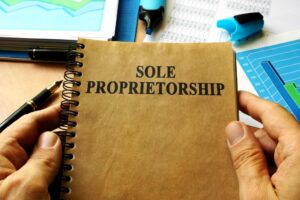[mc4wp_form id=»831″]
Cost of Goods Sold COGS Explained With Methods to Calculate It

Thus, the cost of the revenue takes into consideration COGS or Cost of Services and other direct costs of manufacturing the goods or providing services to the customers. Such cost would include costs like cost of material, labour, etc. however, it does not consider indirect costs such as salaries for determining the Cost of Revenue. Thus, items sold at a specific cost during the accounting period can be included in the cost of goods sold.
- So, if we consider companies providing services to their clients, such companies neither have goods to sell nor have any inventories.
- Now, in order to better understand the FIFO method, let’s consider the example of Harbour Manufacturers.
- Cost of Goods Sold (COGS), otherwise known as the “cost of sales”, refers to the direct costs incurred by a company while selling its goods or services.
- The Internal Revenue Service (IRS) department permits companies to deduct the cost of goods utilised to manufacture or purchase goods that need to be sold to the customers.
The average price of all the goods in stock, regardless of purchase date, is used to value the goods sold. Taking the average product cost over a time period has a smoothing effect that prevents COGS from being highly impacted by the extreme costs of one or more acquisitions or purchases. Since prices tend to go up over time, a company that uses the FIFO method will sell its least expensive products first, which translates to a lower COGS than the COGS recorded under LIFO.
What is the formula for COGS?
You may need to physically count everything in inventory or keep a running count during the year. Facilities costs (for buildings and other locations) are the most difficult to determine. You must set a percentage of your facility costs (rent or mortgage interest, utilities, and other costs) to each product for the accounting period in question (usually a year, for tax purposes). Any additional productions or purchases made by a manufacturing or retail company are added to the beginning inventory.
Thus, in this case, cost is attached to each withdrawal or sale of items. Accordingly, goods sold on October 18, 2018 would comprise of purchases made on October 18, 2019 would comprise of purchases made on October 8, 2019 and October 14, 2019. Now, to calculate the cost of ending inventory and COGS, FIFO method is used. Under the Perpetual Inventory System of inventory valuation, only increases and decreases in the quantity of inventory (not the dollar amounts) are recorded in detail.
COGS Formula (Extended)
This system of inventory helps in determining the level of inventory at any point in time. Furthermore, under this method, there is always a chance of committing an error due to improper entry or failure to prepare or record the inventory purchased. As a result, the recorded inventory may differ from the actual inventory.

The calculation of the cost of goods sold is focused on the value of your business’s inventory. When inventory is artificially inflated, COGS will be under-reported which, in turn, will lead https://www.bookstime.com/ to a higher-than-actual gross profit margin, and hence, an inflated net income. During periods of rising prices, goods with higher costs are sold first, leading to a higher COGS amount.
How To Calculate Cost of Goods Sold
This is because the oldest costs are considered and are matched with the current revenues. In this case, we will consider that Harbour Manufacturers uses the perpetual inventory system and FIFO method to calculate the cost of ending inventory and COGS. Gross Profit Margin is a percentage metric that measures the financial health of your business. Thus, if Gross Profit Margin fluctuates to a great extent, it may indicate inefficiency in terms of management or poor quality of products.
The cost of goods made or bought adjusts according to changes in inventory. For example, if 500 units are made or bought, but inventory rises by 50 units, then the cost of 450 units is the COGS. At the beginning of the year, the beginning given the following information for a retailer, compute the cost of goods sold. inventory is the value of inventory, which is the end of the previous year. Cost of goods is the cost of any items bought or made over the course of the year. Poor assessment of your COGS can impact how much tax you’ll pay or overpay.
The cost of goods sold is considered an expense when looking at financial statements. That’s because it’s one of the costs of doing business and generating revenue. For companies attempting to increase their gross margins, selling at higher quantities is one method to benefit from lower per-unit costs. The gross profit metric represents the earnings remaining once direct costs (i.e. COGS) are deducted from revenue.
Cost of goods sold was calculated to be $9,360, which should be recorded as an expense. Beginning merchandise inventory had a balance of $3,150 before adjustment. The inventory at period end should be $8,955, requiring an entry to increase merchandise inventory by $5,895. Cost of goods sold was calculated to be $7,200, which should be recorded as an expense. Merchandise inventory, before adjustment, had a balance of $3,150, which was the beginning inventory. The inventory at the end of the period should be $8,895, requiring an entry to increase merchandise inventory by $5,745.

